Unveiling the Remote Control by SZ DJI TECHNOLOGY: FCC ID SS3-WM300U58G – A Comprehensive Teardown and Specs Analysis
Introduction
The Remote Control by SZ DJI TECHNOLOGY, identified by the model WM300U58G and FCC ID SS3-WM300U58G, represents a cutting-edge device designed to enhance user interaction with various DJI products. This remote control unit serves as a crucial interface, allowing users to seamlessly manage and operate their devices with precision and ease. The FCC certification, under the ID SS3-WM300U58G, underscores its compliance with stringent RF emission standards, ensuring it is safe for use and legal for sale within the United States. This article delves into the intricate details of this remote control, exploring its key specifications, internal components, operating frequencies, and the technological insights derived from its FCC filing.
Key Features & Specifications
While official detailed specifications for the SZ DJI TECHNOLOGY Remote Control are limited, certain expectations align with devices of this nature:
- Ergonomic Design: Designed for comfortable handling, facilitating extended use without fatigue.
- High-Precision Controls: Joystick assemblies likely provide accurate input, essential for drone piloting or camera control.
- Wireless Connectivity: Operates on designated frequencies for reliable communication with paired devices.
- Battery Life: Equipped with a lithium polymer battery, offering extended operational periods.
- Robust Build Quality: Metal shielding and a multi-layer PCB ensure durability and efficient RF communication.
- Modular Interfaces: Multiple connectors support various peripheral integrations, enhancing device versatility.
Operating Frequencies
The SZ DJI TECHNOLOGY Remote Control operates on specific frequencies as detailed in its FCC filing:
| Frequency Range (GHz) | Output Power (mW) | FCC Rule Part |
|---|---|---|
| 5.728-5.844 | 62 | 15C1 |
These frequencies are pivotal for understanding the device’s wireless capabilities and ensuring it meets regulatory standards for RF communications.
Technology Deep Dive
The SZ DJI TECHNOLOGY Remote Control likely utilizes advanced wireless technologies such as Wi-Fi or Bluetooth, although the equipment class is not explicitly stated. Operating within the 5.8 GHz band, the device benefits from reduced interference and enhanced data rates, making it ideal for applications requiring stable and robust connections. The power level of 62 mW is optimized for maintaining a balance between range and power consumption, crucial for portable devices. The absence of cellular capabilities suggests a focus on direct device-to-device communication, typical for remote controls.
In-Depth Internal Component Analysis / Teardown
The internal architecture of the SZ DJI TECHNOLOGY Remote Control reveals sophisticated engineering aimed at enhancing performance and reliability.
-
The PCB showcases several ICs under a metal shield, indicating an SoC or RF component critical for wireless communication. The presence of a white external antenna connected via coaxial cable highlights its RF capabilities. The robust design, featuring multi-layer FR4 material, underscores a focus on reliable RF performance.
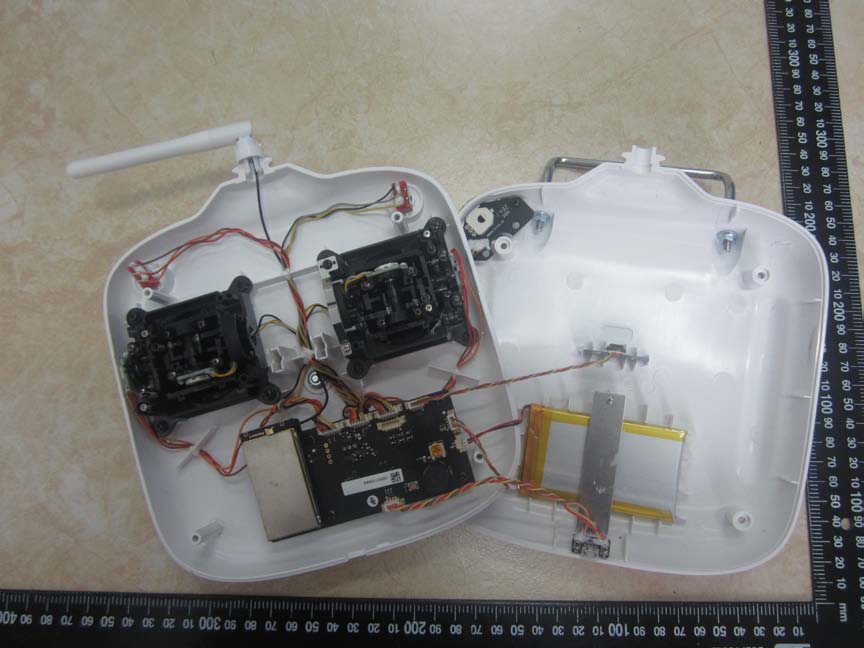
Main PCB with RF Shielding and External Antenna. -
Another PCB image reveals a modular design with multiple connectors, suggesting flexibility in interfacing with various peripherals. The extensive shielding indicates careful EMI/RFI management, essential for maintaining signal integrity. The inclusion of a buzzer or speaker hints at audio feedback functionality.

PCB with Connectors and Extensive Shielding for EMI Management. -
This PCB appears more straightforward, with connectors and a few passive components, indicating its role as an interface board. Its simplicity suggests a focus on connectivity, possibly linking other modules within the device.
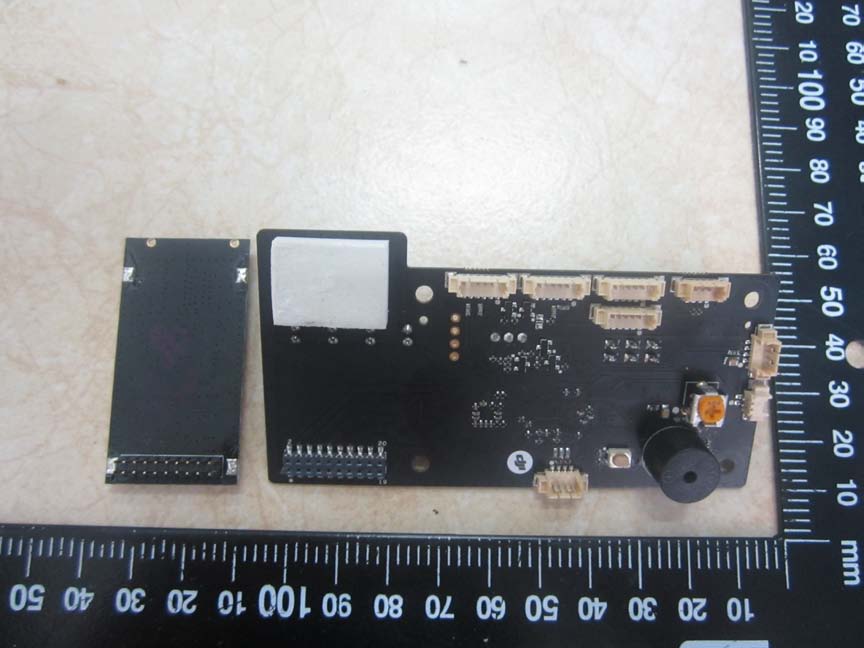
Interface PCB with Connectors for Module Integration. -
The PCB with visible ICs likely includes a microcontroller or SoC, managing the device’s core functions. The presence of tactile switches and LEDs supports user interaction and status indication.
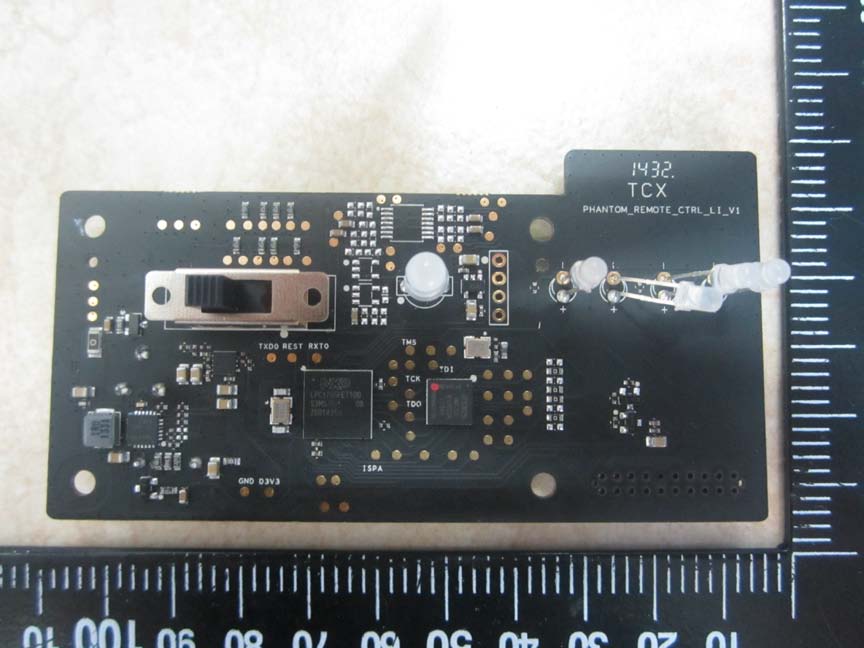
Control PCB with Microcontroller and User Interface Components. -
A compact RF transmission board, marked ‘5.8G TX RF V5’, indicates its role in wireless communication. The U.FL connector facilitates external antenna connections, essential for optimizing RF performance.
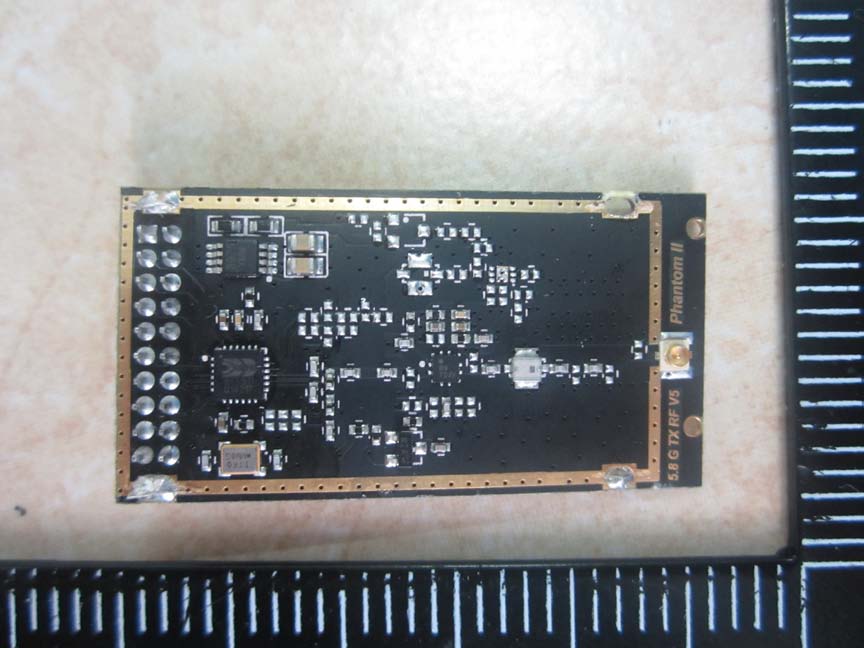
Compact RF Module with U.FL Connector for Antenna. -
This simple adapter board, featuring a 3.5mm audio jack, suggests its use in interfacing with external devices. The minimal design emphasizes mechanical stability and straightforward connectivity.
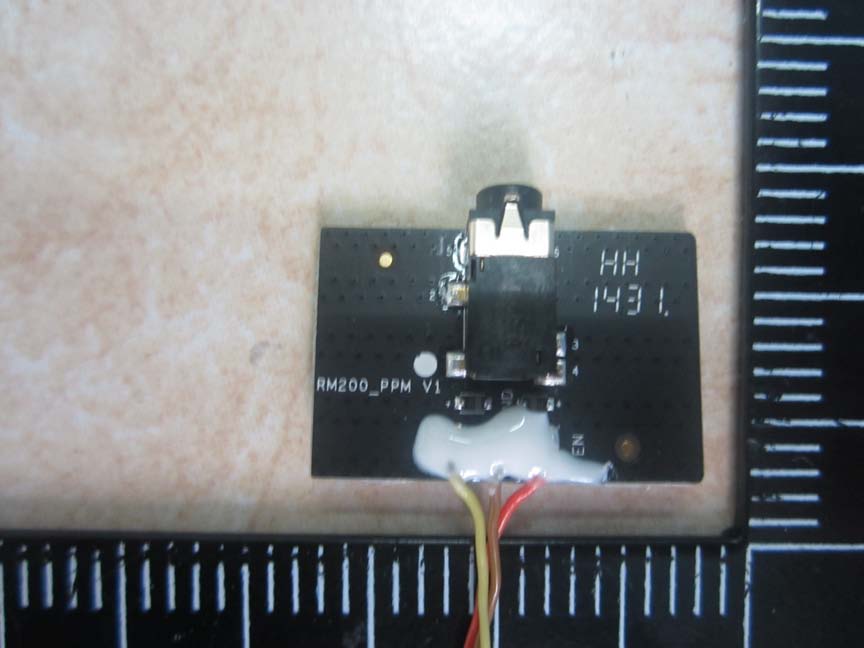
Simple Adapter Board with Audio Jack for External Connections. -
A small PCB labeled ‘RM200 PITCH V2’ likely serves a specific function, such as orientation sensing. The inclusion of a single IC and minimal components reflects a cost-effective design for targeted applications.

Sensor Module PCB for Orientation Sensing.
Regulatory Insights & FCC Filing
The FCC ID SS3-WM300U58G certifies the SZ DJI TECHNOLOGY Remote Control’s compliance with US electromagnetic interference standards, ensuring it is both safe and legal for consumer use. Registered with the FCC, this certification encompasses a comprehensive evaluation of the device’s RF emissions, ensuring they fall within permissible limits. FCC filings typically include test reports, internal and external photos, user manuals, and schematics, providing a detailed overview of the device’s design and performance characteristics.
Potential Use Cases & Target Audience
The SZ DJI TECHNOLOGY Remote Control is ideally suited for:
- Drone Enthusiasts: Offering precise control and extended range, it is perfect for hobbyists and professionals managing aerial photography or videography.
- Tech-Savvy Consumers: Users seeking a reliable interface for controlling advanced electronic devices will appreciate its ergonomic design and robust connectivity.
- Developers and Engineers: Ideal for those developing or testing RF communication systems, given its sophisticated design and modular interfaces.
Conclusion
The SZ DJI TECHNOLOGY Remote Control, identified by FCC ID SS3-WM300U58G, stands out as a well-engineered device, balancing performance with regulatory compliance. Its sophisticated internal architecture and robust design make it a reliable choice for various applications, from drone piloting to advanced electronic control. With FCC certification ensuring adherence to stringent standards, this remote control exemplifies cutting-edge technology designed for both enthusiasts and professionals alike.